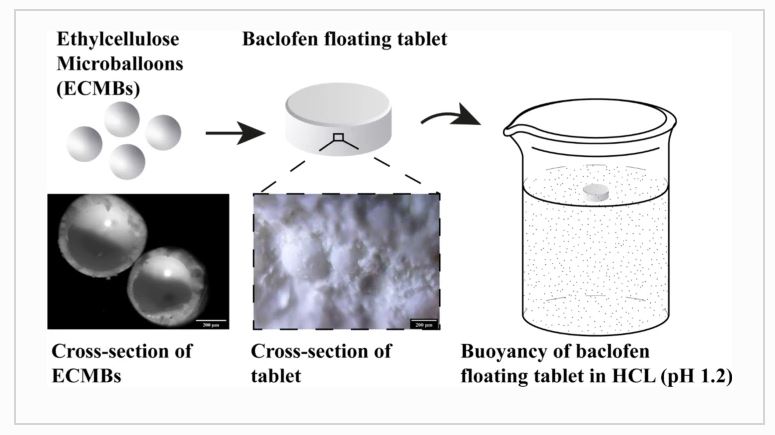Development and Optimization of Microballoons Assisted Floating Tablets of Baclofen

The objective of the present study was to develop microballoons aided gastro-retentive floating tablets of baclofen, a skeletal muscle relaxant with a low elimination half-life of ~ 3.5 h. Baclofen floating tablet was prepared to offer convenience by designing a tablet that would float in the stomach for a prolonged period and allow controlled drug release to enable once-a-day administration. Ethylcellulose microballoons (ECMBs) prepared by pseudo emulsion solvent diffusion method were employed as floating aid. The ECMBs were spherical with a size of 446.71 µm and a circularity index of 0.995. Buoyancy of 98.90 percent and good flowability reflected by an angle of repose of 23° suggested the feasibility of preparing floating tablets by direct compression.
Directly compressed baclofen floating tablets comprised ECMBs, HPMC-K15M, and hydroxyl ethylcellulose as independent variables in the Box-Behnken design, however, performance characteristics of tablets such as in vitro drug release, floating lag time, and swelling index were selected as the dependent variables. Among the variables, ECMBs played a critical role in ensuring buoyancy. However, HPMC-K15M significantly influenced in vitro drug release. The optimized batch displayed Hickson-Crowell kinetics and exhibited a similar drug release profile as a marketed once-a-day formulation (f2, 91.03). Furthermore, optimized tablets showed a swelling index of > 300, floating lag time < 3 s, and total floating time > 24 h. Microballoons assisted floating tablets exhibited great promise for assured gastric retention of tablets.
Wavhule, P., Devarajan, P.V. Development and Optimization of Microballoons Assisted Floating Tablets of Baclofen. AAPS PharmSciTech 22, 272 (2021). https://doi.org/10.1208/s12249-021-02139-y

